Maxwell Boyce, is a Welsh comedian, singer and entertainer from Glynneath, Wales. He rose to fame in the mid-1970s with an act that combined musical comedy with his passion for rugby union and his origins in a South Wales mining community. Boyce's We All Had Doctors' Papers (1975) remains the only comedy album to have topped the UK Albums Chart and he has sold more than two million albums in a career spanning four decades.

Bridgend is a town in the Bridgend County Borough of Wales, 20 miles (32 km) west of Cardiff and 20 miles (32 km) east of Swansea. The town is named after the medieval bridge over the River Ogmore. The River Ewenny also flows through the town. The population was 49,597 in 2021. Bridgend is within the Cardiff Capital Region which in 2019 had a population of approximately 1.54 million.
Iestyn ap Gwrgant (1014–1093) was the last ruler of the Welsh kingdom of Morgannwg, which encompassed the counties of Glamorgan and Monmouthshire.
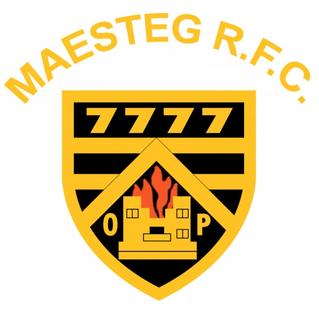
Maesteg Rugby Football Club is a rugby union team from the town of Maesteg, South Wales. The club currently play in the Division 3B west Central Welsh Rugby Union and is a feeder club for the Ospreys.
Resolven is a small village and community in Neath Port Talbot county borough, Wales. It is located in the Vale of Neath.
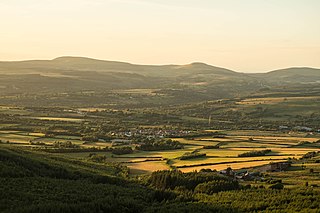
Rhigos is a small village on the saddle of higher ground between the Vale of Neath and the Cynon Valley. It was part of the old Neath Rural district Council under Glamorgan until 1974. The village then came under the jurisdiction of The Cynon Valley Borough which subsequently became Rhondda Cynon Taf, South Wales in 1996. It lies just off the old Aberdare road that was the main link between Aberdare and Glynneath, before the A465 road was extended in the 1960s. The hamlets of Cefn Rhigos and Cwm-Hwnt lie to the west of the main village.

Tylorstown is a village and community located in the Rhondda valley, in the county borough of Rhondda Cynon Taf, Wales. It is neighboured by the villages of Blaenllechau, Ferndale, Penrhys, Pontygwaith and Stanleytown.
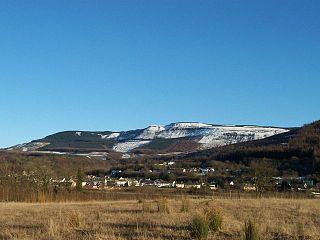
Blaengwrach is a community near Glynneath and Resolven in the county borough of Neath Port Talbot, Wales. It is also the name of an electoral ward of Neath Port Talbot county borough, which is a larger area than the Community. The principal settlement is Cwmgwrach, a village on the south side of the Neath valley, of which the eastern end is called Blaengwrach, which sometimes causes confusion.
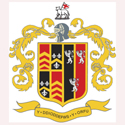
Glynneath RFC are a Welsh Rugby Union club playing in WRU Division 1 West Central of the WRU National Leagues. The Club has won a number of honours over the years, including the locally famous Invincibles of the 1961–62 season captained by Bas Thomas.
Porthcawl Rugby Football Club is a Welsh rugby union team based in Porthcawl, Wales. The club is a member of the Welsh Rugby Union and is a feeder club for the Ospreys.
Aberpergwm is the site of a colliery in the Vale of Neath near Glynneath in south Wales.
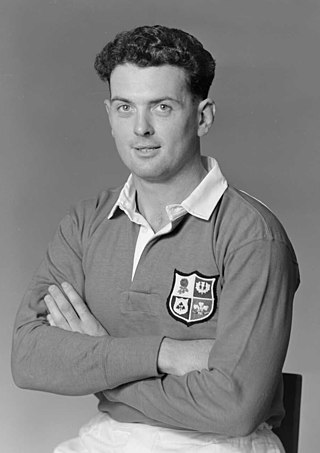
John Rees Glyn Stephens was a Welsh international rugby union player who played club rugby for Tonmawr RFC and Neath. He won 32 caps for Wales and was selected to play in the British Lions on the 1950 tour of Australia and New Zealand. He was the son of a past Welsh rugby international, Glyn Stephens, who was also president of the Welsh Rugby Union.
Corus Rugby Football Club was a Welsh rugby union clubs based in Port Talbot. It is now known as Tata Steel RFC, the club is a member of the Welsh Rugby Union and is a feeder club for the Ospreys.

David "Dai" Rees Prosser was a Welsh dual-code international rugby union, and professional rugby league footballer who played in the 1930s and 1940s, and coached rugby league in the 1960s. He played representative level rugby union (RU) for Wales and Glamorgan County RFC, and at club level for Glynneath RFC, Neath RFC and Swansea RFC as a prop, and representative level rugby league (RL) for Great Britain and Wales, and at club level for York and Leeds as a prop, and coached club level rugby league for Leeds.
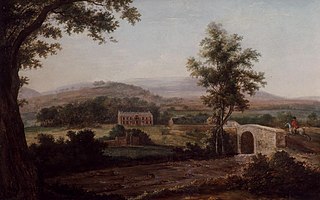
Aberpergwm House is an abandoned and ruinous country house located in Glynneath, Wales. Within the grounds of the house sits the church of St. Cadoc, which is possibly of late medieval origin.

Maria Jane Williams was a 19th-century Welsh musician and folklorist born at Aberpergwm House, Glynneath in Glamorgan, South Wales. She rescued many Welsh songs from obscurity, including Y Deryn Pur and Y Ferch o'r Sger.
The Bank of Williams and Rowland was a bank established in the 19th century and operating in Neath, in south Wales.

St. Cadoc's Church is a Church in Wales church in Glynneath, Wales. It is located in the grounds of the now derelict Aberpergwm House for which it was an estate church.

Rheola House is a Grade II* listed country house between Glynneath and Resolven, in the Neath valley, South Wales. Designed by John Nash, it was built between 1812 and 1814 for Nash's cousin, John Edwards. It passed through inheritance to members of the Edwards, Vaughan, and Lee families, until in 1939, with the house becoming run down, it was bought by an aluminium company for use as offices, and part of the land was put to industrial uses. In 2012 an application was made for housing on the industrialised area, to enable restoration of the house and a leisure complex to sustain the estate. The application was granted in 2014. The gardens and park around the house are designated Grade II on the Cadw/ICOMOS Register of Parks and Gardens of Special Historic Interest in Wales.
Dafydd Nicolas, or David Nicholas was a Welsh poet.
















